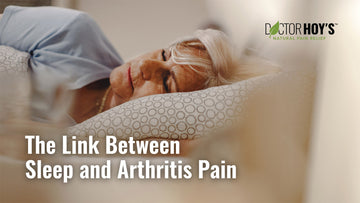Don’t Quit: How to Relieve Sore Muscles
Feb 18, 2022
The close of a calendar year feels like the perfect time to leave holiday treats behind. January is an opportunity to move forward and create healthy habits. One study shows that the most popular New Years resolutions are related to exercise, diet, and weight loss. This might explain why gym membership sales increase significantly during this month. The motivation of a fresh start has scales dusted off, gyms filled with people, and fridges stocked with fresh produce.

January is arguably the most difficult month to accomplish fitness goals. The days are short and the temperatures are cold. It is difficult to find the motivation to eat right and be active with the temptation of a warm couch, fuzzy blanket, and television. It is easy to just stay home and enjoy some comfort food.
Cold weather is not the only justification to derail resolutions. Skipping exercise is nearly impossible to resist when you are sore from the last workout. Excuses creep in and gym attendance drops. Unfortunately, data shows that physical activity decreases as soon as the third week of January and returns to completely average by the middle of March.

We all know the feeling—proud of the efforts you made during your workout, until the next morning when you wake up with sore muscles. Regret sets in as legs and arms feel like jelly and you wonder how you will survive the next flight of stairs. This familiar experience is known as Delayed Onset Muscle Soreness (DOMS). If you have been pursuing 2020 fitness goals, it is likely that you have already experienced it.
DOMS is defined as soreness that develops 24-72 hours after exercise. It typically happens in response to new exercises to which the body is not adapted. Dr. Michael Jonesco, a sports medicine physician at Ohio State University Wexner Medical Center says, “It isn’t an indication that you’ve done something wrong. It indicates you’ve stretched your body to the point that you’ve caused some muscle damage.”

DOMS can happen following a variety of exercises, such as strength training, jogging, aerobics, and jumping. During physical activity, muscles contract and cause microscopic tears within the muscle. Soreness actually occurs during the repair process, when the body works to mend these micro tears. Dr. Michael Jonesco explains, “Soreness is a by-product of healing.” Even though DOMS is a symptom of healing and adapting, it can prove difficult to muster up the motivation to continue working out while suffering from muscle soreness.
Don’t let DOMS discourage your health and wellness resolutions! Stay on track with the help of Doctor Hoy's® Natural Pain Relief products. Our superior ingredients relieve sore muscles and boost recovery. The cool and warm sensation of the Pain Relief Gel feels wonderful after workouts. It lasts for several hours with our unique time-release menthol technology.
“I exercise consistently by lifting weights at the gym. I know it was a good workout when I experience some soreness. I apply Doctor Hoy's Pain Relief Gel before bed and wake up ready for my next workout!”
Jackson, Amateur weight-lifter
“I love Doctor Hoy's Natural Pain Relief Gel. I rub it into tight muscles before running for a better warm-up and after a workout to soothe over worked muscles. What makes it even better is Doctor Hoy's is natural and contains no oils. That means no lingering odor or greasy residue.”
Sue, Marathon runner




